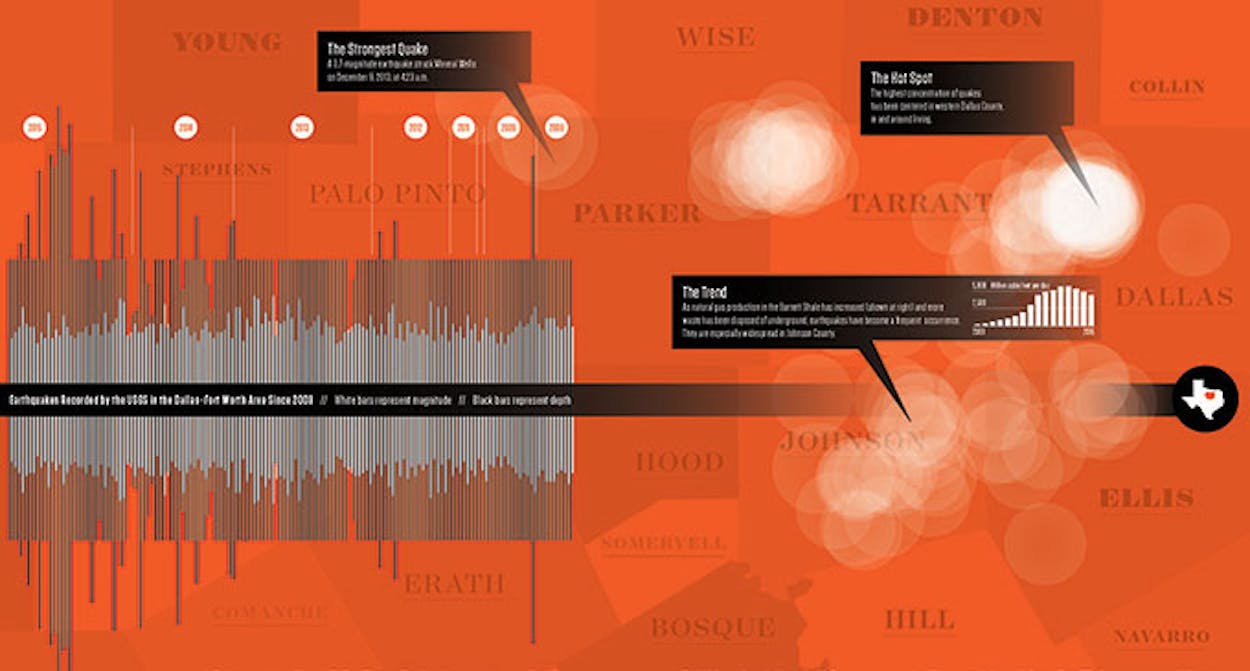Before 2008 the residents of Dallas–Fort Worth had rarely felt the ground shake. There had been a couple of tremors over the years, but for the most part, the area was seismically stable. That is, until the fracking started.
In the past decade, hydraulic fracturing, or fracking, in the Barnett Shale formation, which lies beneath much of the region, has sparked an oil and gas boom. At the same time, the area has seen a rise in seismic activity. Between October 30, 2008, and April 3 of this year, the U.S. Geological Survey documented 151 earthquakes registering 2.0 or greater on the Richter magnitude scale within sixty miles of Fort Worth.
The fracking process isn’t actually the cause of these quakes, says Cliff Frohlich, a seismologist at the University of Texas at Austin; rather, the culprit for at least some of them is the method by which producers dispose of the copious wastewater from fracking. The industry pumps the waste into underground disposal wells, which, given the right conditions, can cause earthquakes. If a disposal well is near a fault—and North Texas has an array of small ones—and that fault is under geologic stress, then liquid from the well can lubricate the fault, causing it to slip and shake the ground. It’s often difficult to trace a quake back to a particular disposal well, though researchers at Southern Methodist University and UT have linked some quakes to certain ones.
The quakes have so far been minor. The largest one recorded by the USGS, in late 2013, measured 3.7. Most have been smaller. You can barely feel a quake of 2.0 magnitude, and a 3.0 quake might slightly rattle a house. But a 5.0 earthquake is possible, Frohlich says, and should that occur in downtown Dallas or Fort Worth, it could cause millions in damages.
View a larger version of the infographic here.







